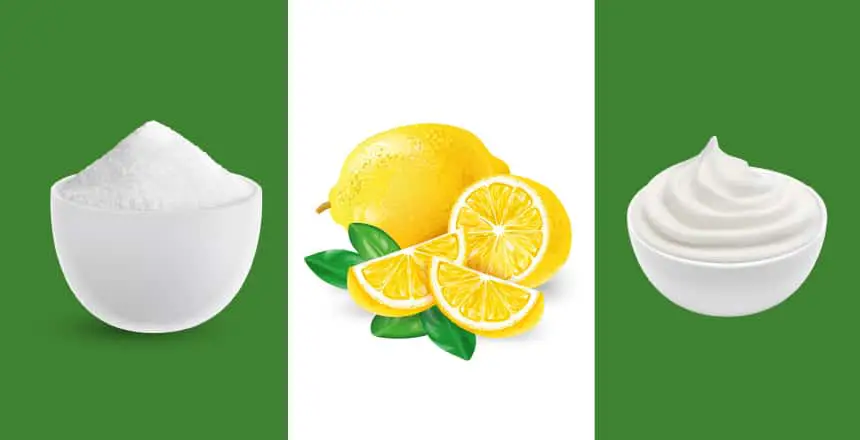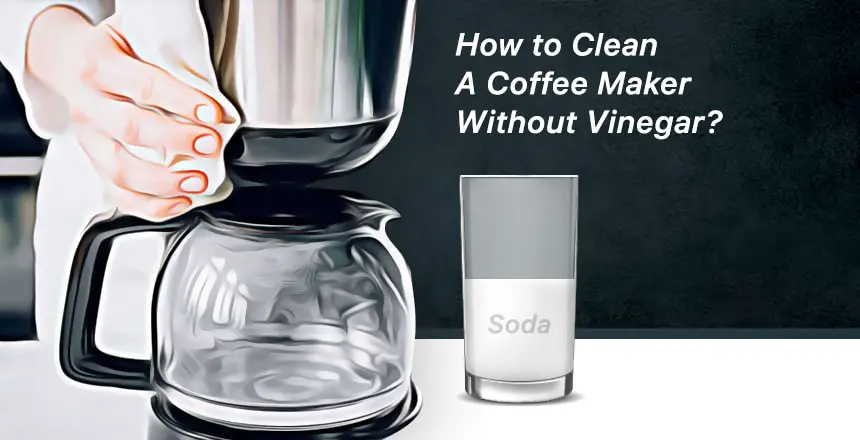Preparing fresh, steaming hot coffee in the morning is one of the best things about starting your day. It’s such a non-replaceable part of our morning routine, even more so if you simply can’t get enough of coffee.
But using the brewing system every morning also means that you have to clean it more frequently. So here’s how to clean a coffee maker without vinegar – it’s one of the most frequently asked questions when it comes to coffee maker maintenance.
You certainly have to do more than just wash the carafe. Not cleaning the water reservoir is a huge mistake because it plays an important role in the brewing process. More importantly, if there’s dirt, grime, mineral deposits, and other unwanted, unhygienic elements in the tank, it’s more likely to spread these to other components of the machine too.
As for vinegar, it’s commonly used for cleaning coffee makers, blenders, kettles, dishwashers, etc. However, it has a weird, unpleasant odor that seems to linger on long after the product has been rinsed off. In that case, if you decide to skip vinegar and use another cleaning agent, here’s what you can opt for instead.
Contents
Cleaning the Coffee Maker Without Vinegar

1. How to Clean Coffee Maker With Baking Soda or Borax
A natural disinfectant, baking soda is widely popular as an all-purpose cleaner. It’s affordable and easy to find plus baking soda, unlike vinegar, can be easily washed off.
- You only need some lukewarm water and baking soda – 1 cup of water and 1/3 or 1/4 cup of baking soda (combine the two in a bowl). Pour the mixture into your coffee machine’s water reservoir. Run 2–3 brewing cycles using the baking soda cleaning solution.
- Then run another 2–3 brewing cycles with clean water to rinse off the baking soda.
- After that, wash the carafe/pot with dish soap and you’re done.
2. How to Clean Coffee Maker With Lemon Juice
Vinegar’s acidic nature is why the product is able to dissolve calcium deposits, cut through grime and grease, and remove odors. Vinegar also has antibacterial properties. But so does lemon, it does all of the things I mentioned in the first sentence.
So here’s the quick and convenient process of cleaning the coffee maker using lemon juice.
- Squeeze lemon juice out of 2 lemons and mix it with water in a bowl (one part lemon juice, one part water).
- Add the lemon and water cleaning solution to the water reservoir, along with some fresh water.
- Run the cleaning cycle a couple of times.
- Then repeat the process with only clean water to get rid of the lemon juice from all the internal parts of the machine.
- Lastly, rinse the pot with warm, soapy water.
3. How to Clean Coffee Maker With Cream of Tartar
This method involves the use of tartaric acid, which contains natural antibacterial properties.
Here’s how to clean a coffee maker using cream of tartar instead of vinegar…
- Start by filling the water reservoir of the coffee machine with fresh, clean water.
- Add 3 tablespoons of cream of tarter into the reservoir. Make sure it dissolves completely.
- Run the brewing cycle 3–5 times with the cream of tartar solution.
- Then run another few cycles with just plain water to wash off the cream of water.
- Finish the cleaning process by rinsing the coffee pot with soap and water.
4. How to Clean Coffee Maker With Hydrogen Peroxide or Alcohol
Here’s another affordable, multipurpose cleaning product used in many households – hydrogen peroxide. And here’s how you can use its excellent disinfecting properties to remove bacteria, mold, and whatnot from your coffee maker.
- First, fill the water reservoir of the machine with water.
- Second, add a cup of the cleaning solution (equal parts hydrogen peroxide and equal parts water) into the reservoir.
- Third, run 2–3 brewing cycles.
- Fourth, now pour only water into the reservoir and run another 2–3 brewing cycles.
- And finally, thoroughly wash the carafe or pot using soap and water to rinse off the chemical.
You can perform these same steps but with alcohol instead of hydrogen peroxide (either food-grade alcohol such as vodka or isopropyl alcohol).
5. How to Clean Coffee Maker With Dish Soap
Using any mild dish soap, you can easily and effectively clean your coffee maker.
- All you have to do is mix soap and water. Then wet a cloth or sponge with this soapy solution and gently scrub the inside of the water reservoir – the scrubbing will get rid of stains, build-up, etc.
- Add all detachable parts of the coffee machine into a sink filled with soapy water. Rinse them clean under running water.
- After that, reassemble your coffee maker and run a full brewing cycle using plain water to flush out any soap residue.
Commonly Asked Questions About Cleaning Coffee Maker
Is Vinegar A Good Coffee Maker Cleaner?
Vinegar has acetic acid, which is a chemical strong enough for dissolving germs and mold. It can also break down mineral deposits residing on the surface of things. That’s why vinegar is one of the best options to clean coffee makers. This natural cleaning agent’s disinfectant properties are excellent plus it’s very affordable to buy and easy to find.
But using vinegar also means having to deal with its pungent smell, which can mess with the delicious taste of your brew. That’s why you need to know how to clean a coffee maker without vinegar.
Why Clean Coffee Maker Without Vinegar?
It’s because of two main reasons – vinegar has an unpleasant odor (that lingers) and it might cause damage to your coffee maker’s finish.
Is A Descaling Solution Better Than Vinegar?
Removing calcium deposits from the interior of the coffee maker is a must since they hinder the performance of the brewer. Now you can easily use a commercial descaling solution to get the job done since these are specifically created to eliminate build-up. So yes, descaling solutions are extremely effective.
Or you can also choose an all-natural, affordable alternative – vinegar.
Can You Clean the Coffee Maker With Soapy Water?
You can use liquid dish soap to clean your coffee machine. But if you’re worried about soap water running through the coffee maker’s filtering system, so long as you disassemble the detachable parts of the machine afterward to rinse them well, you have nothing to worry about. Also make sure that you put them back properly and that there are no suds or soapy leftovers.
How Often to Clean Coffee Maker?
The answer depends on how much you use the coffee maker to make the hottest coffee. If you can’t do without a cup of your most flavorful brew in the morning, you’d better be cleaning your precious coffee machine regularly i.e. once in 3 months. Generally, you should be cleaning the coffee maker every 3–6 months.
If you don’t, then mineral deposits and coffee residue are just going to keep building up. As a result, your machine’s performance will get affected and so will the quality of your freshly prepared coffee.
The End
For some, making and drinking coffee is the most enjoyable part of the experience. But for all, maintaining the coffee maker is the least enjoyable. No wonder so many of us keep postponing the cleaning process.
However, there’s only a limit to which we can do this; there will come a time when not cleaning won’t be an option anymore. So, for those times, you must know how to clean your coffee maker in different ways.
But can you do it without using vinegar or even a commercial descaling solution? Yes, you can. Just replace those items with multipurpose, common products like baking soda, lemon juice, hydrogen peroxide, dish soap, or cream of tartar.
